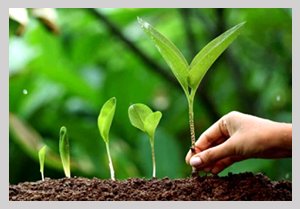|
A plantation is usually made up of fast-growing trees planted either to replace already-logged forests or to substitute for their absence. Plantations differ from natural forests in several ways: Plantations are usually monocultures. That is, the same species of tree is planted in rows across a given area, whereas a conventional forest would contain far more diverse tree species. Plantations may include introduced trees not native to the area, including (in a few cases) unconventional types such as hybrid trees and genetically modified trees. Since the primary interest in plantations is to produce wood or pulp, the types of trees found in plantations are those that are best-suited to industrial applications. For example, pines, spruces and eucalyptus are widely used because of their fast growth rate, and are good for paper and timber production.
| Plantations are always young forests. Typically, trees grown in plantations are harvested after 10 to 60 years, rarely up to 120 years. This means that the forests produced by plantations do not contain the type of growth, soil or wildlife typical of old-growth natural forest ecosystems. Most conspicuous is the absence of decaying dead wood, a very important part of natural forest ecosystems. Plantations are grown by state forestry authorities (for example, the Forestry Commission in Britain) and/or the paper and wood industries and other private landowners (such as Weyerhaeuser and International Paper in the United States Christmas trees are often grown on plantations as well. In southeast Asia, rubber, oil palm , and more recently teak plantations have replaced the natural forest. By convention, plantations of fruit-bearing trees are termed orchards, even if grown on scales that occupy a landscape to the horizon. Plantations of grapevines are termed vineyards. |


